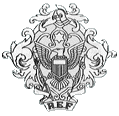

Designation:AF-3 Bat (-A, -B, -T) |

|
||||

|
|||||
| Total Length: | 17.1 m |
| Total Height: | 4.1 m |
| Total Wingspan: | 9.5m |
| Total Dry Weight: | 12.9 metric tons |
4 underwing hardpoints under the inner wings can each mount:
The most common payloads for this mecha are:
The skin of the Bat is composed of an advanced titanium-steel alloy. The armored skin stops all small arms fire, provides good protection against heavier infantry weapons, such as a 12.7mm machinegun round, and fair resistance to light mecha-mounted weaponry, such as the Zentraedi 22.3mm HE autocannon round. The total protection marginally better than that on the Valkyrie. The Bat provides full protection from nuclear, biological, and chemical hazards, using an overpressure cockpit environment activated by radiation and hazardous chemical sensors, or manually when biological warfare conditions are anticipated. The internal consumables supplies can provide atmosphere for one day maximum.
In the middle 2010s the Earth government started replacing the mecha of its defence forces with newly designed models incorporating the lessons of the Robotech War. For the RDF Air Force, and the embryonic REF Air Force, this meant that many pre-war aircraft such as the Dragon were retired, and that their main mecha, the VF-1 Valkyrie, would be the next to follow. The first replacement for the Valkyrie was the VF-6A Alpha air superiority fighter. This mecha was more than capable of taking over the Valkyrie's air superiority and ground support roles, but was incapable of assuming the role of strike mecha due to its limited armament options compared to the Valkyrie. The Air Force first planned to replace their strike-tasked Valkyries by a project called VA-X which would have delivered a Veritech attack mecha. However, budgetary realities killed this project after a year. The Air Force then tried to procure an Air Force version of the VF-4 Lightning, which was to save on development costs by having an 80% commonality with the Naval VF-4. This was also not acceptable to the Treasury department, and the Air Force finally settled (with a lot of grumbling under its top officers) for an unaltered VF-4. At about that time, however, the government began an investigation into the replacement of some of the expensive Veritechs with non-transformable planes. For the Navy, this caused a large fraction of their planned VF-4 production to be canceled in favor of the Vulture space fighter, and as the Air Force had not yet procured any VF-4s, a design competition was held between the VF-4 and a number of non-transformable aircraft. The results of this competition showed that the strike role of the Air Force could be done as well (and more cheaply, even with greater numbers of aircraft) with a suitable non-transforming fighter. By the time a decision was to be made, the RDF Air Force had been effectively disbanded, but its daughter, the REF Air Force, selected the AF-3 Bat as its next generation strike aircraft, and procured nearly 4200 of them.
The shape of the Bat was inspired by the Veritech Lightning; the four engines were mounted in large engine pods on the wings. From there, relatively small wings led to the main hull, which contained the reaction mass tankage, the cockpit, electronics and the two lasers. The missile hardpoints were mounted under the inner wings. Compared with the VF-4, the Bat had a higher acceleration and top speed, and nearly the same effective weapons load. Late in the design stage Alpha-style internal bays for Hammerhead and Diamondback missiles were added to the upper nacelles, to allow for a greater defensive capability. The Bat was originally procured in two versions: the AF-3A, the basic combat aircraft, and the AF-3T, a combat-capable trainer. After two years newly delivered single seat aircraft were of the AF-3B version, which had mainly minor improvements and the REF standard sensor suite. All remaining AF-3A models were subsequently refitted up to AF-3B standards.
As the Sentinels' War began, the Bat proved to be the ideal weapon against massed Invid mecha formations. The RMS missiles were more than capable of destroying an Hive or, if the Bat was used to strengthen the Naval Air assets, an Invid Mollusk troopcarrier, and the cluster weapons were welcome for their ability to thin out ranks of Invid mecha in space, or on the ground. However, as the Beta Fighter came into ever wider service, it was realized that a pair of Alpha/Beta Legios fighters were quite capable of doing the same job, and just at the time the Bat began to suffer its worst attrition in the field, it was also made a victim of the REF's perceived need for logistical simplicity and standardization. Most of the remaining Bats returned to Earth with the Relief Expedition that linked up with the Southern Cross at the end of the Second Robotech War, and after the war, some 500 aircraft were stored at moon base Luna, and were eventually used by the troops stranded there in a futile attack on Reflex Point several years before the return of the REF Mars Division.
Return to REF Aircraft Index.
Go to Robotech Reference Guide Home Page.
Robotech (R) is the property of Harmony Gold. This document is in no way intended to infringe upon their rights.
Content by Pieter Thomassen and Peter Walker